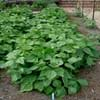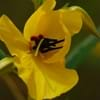Life Span
Annual
Perennial
Type
Vegetable
Flowering Plants, Fruits, Herbs
Origin
Central America, South America
Australia, Tropical Indomalaya
Types
Bush Beans, Pole Beans
Cavendish Bananas, Lady Finger Bananas, Pisang Raja, Williams Bananas, Cooking Bananas
Habitat
Cultivated Beds
Subtropical climates, Tropical rainforest, Tropical regions
USDA Hardiness Zone
Not Available
8-15
AHS Heat Zone
Not Available
12-6
Sunset Zone
A1, A2, A3, H1, H2, 1a, 1b, 2a, 2b, 3a, 3b, 4, 5, 6, 7, 8, 9, 10, 11, 12, 13, 14, 15, 16, 17, 18, 19, 20, 21, 22, 23, 24
H1, H2, 2a, 2b, 3a, 3b, 4, 5, 6, 7, 8, 9, 14, 15, 16, 17, 18, 19, 20, 21, 22, 23, 24
Habit
Vining/Climbing
Upright/Erect
Flower Color
Lavender
Burgandy, Ivory, Purple, White, Yellow
Flower Color Modifier
Bicolor
Not Available
Fruit Color
Purple
Red, Yellow, Yellow Brown, Yellow green
Leaf Color in Spring
Green, Purple
Dark Green
Leaf Color in Summer
Green
Green
Leaf Color in Fall
Green
Green
Leaf Color in Winter
Not Available
Green
Leaf Shape
Oval
Cone shaped
Plant Season
Spring, Summer, Fall
Fall, Spring, Summer
Sunlight
Full Sun
Full Sun, Partial shade
Type of Soil
Loam, Sand
Clay, Loamy
The pH of Soil
Neutral, Alkaline
Neutral, Slightly Acidic
Soil Drainage
Well drained
Well drained
Bloom Time
Indeterminate
Early Fall, Early Summer, Late Spring, Late Summer, Summer
Tolerances
Drought
Not Available
Where to Plant?
Container, Ground, Pot
Ground
How to Plant?
Seedlings
From bulbs
Plant Maintenance
Medium
Medium
Watering Requirements
Do Not over Water, Requires regular watering, Water evenly
Allow soil to be completely dry in between waterings, It cannot sustain wet-feet, Requires regular watering, Water every two or three days during warmer months
In Summer
Lots of watering
Lots of watering
In Spring
Moderate
Moderate
In Winter
Average Water
Average Water
Soil pH
Neutral, Alkaline
Neutral, Slightly Acidic
Soil Type
Loam, Sand
Clay, Loamy
Soil Drainage Capacity
Well drained
Well drained
Sun Exposure
Full Sun
Full Sun, Partial shade
Pruning
Remove damaged leaves, Remove dead branches, Remove dead leaves
Prune after harvesting, Remove dead or diseased plant parts
Fertilizers
5-10-10 fertilizer
All-Purpose Liquid Fertilizer
Pests and Diseases
Alternaria Leaf Spot, Anthracnose, Aphids, Armyworm, Bacterial Blight
Anthracnose, Banana aphid, Banana mosaic, Black sigatoka, Bunchy top, Cigar end rot, Coconut scale, Moko disease, Panama disease, Rhizome rot, Yellow sigatoka
Plant Tolerance
Drought
Drought
Flower Petal Number
Single
Single
Foliage Texture
Coarse
Bold
Foliage Sheen
Matte
Glossy
Attracts
Not Available
Not Available
Allergy
Not Available
Anaphylaxis, Mouth itching, Throat itching
Aesthetic Uses
Not Available
Not Available
Beauty Benefits
Beautiful Skin
Not Available
Environmental Uses
Fixes Nitrogen
Air purification
Medicinal Uses
Cancer, Diuretic, Homeopathy, Hypotensive, Miscellany
Anemia, Antioxidants, Bronchitis, Diarrhea, Hangover, Heartburn, High blood pressure, Kidney problems, Menstrual Disorders
Part of Plant Used
Leaves, Seedpod, Seeds
Flowers, Fruits
Other Uses
Used for making brown dye, Used in biomass, Used in in reviving woollen fabrics
Pulp can be used to make rope place mats and other goods, Used As Food, Used in paper industry
Used As Indoor Plant
Yes
No
Used As Outdoor Plant
Yes
Yes
Garden Design
Container, Edible, Herb, Vegetable, Vine
Showy Tree
Botanical Name
PHASEOLUS vulgaris 'Purple King'
Banana Tree
Common Name
String bean, Field bean, French bean
Banana Tree
In Hindi
String Bean
केले के पेड़
In German
Bohne
Bananenbaum
In French
Haricot vert
Bananier
In Spanish
String Bean
Banano
In Greek
Αμπελοφάσουλο
μπανανιά
In Portuguese
Feijão de corda
árvore de banana
In Polish
Fasolka szparagowa
Banana drzewa
In Latin
Gloria Bean
Musa sapientum fixa ligno
Phylum
Magnoliophyta
Magnoliophyta
Class
Magnoliopsida
Liliopsida
Order
Fabales
Zingiberales
Family
Fabaceae
Not Available
Clade
Angiosperms, Eudicots, Rosids
Monocotyledonous
Tribe
Phaseoleae
Not Available
Subfamily
Faboideae
Not Available
Number of Species
Not Available
Season and Care of String Bean and Banana Tree
Season and care of String Bean and Banana Tree is important to know. While considering everything about String Bean and Banana Tree Care, growing season is an essential factor. String Bean season is Spring, Summer and Fall and Banana Tree season is Spring, Summer and Fall. The type of soil for String Bean is Loam, Sand and for Banana Tree is Clay, Loamy while the PH of soil for String Bean is Neutral, Alkaline and for Banana Tree is Neutral, Slightly Acidic.
String Bean and Banana Tree Physical Information
String Bean and Banana Tree physical information is very important for comparison. String Bean height is 210.00 cm and width 60.00 cm whereas Banana Tree height is 16.08 cm and width 7.87 cm. The color specification of String Bean and Banana Tree are as follows:
String Bean flower color: Lavender
String Bean leaf color: Green and Purple
Banana Tree flower color: Burgandy, Ivory, Purple, White and Yellow
- Banana Tree leaf color: Dark Green
Care of String Bean and Banana Tree
Care of String Bean and Banana Tree include pruning, fertilizers, watering etc. String Bean pruning is done Remove damaged leaves, Remove dead branches and Remove dead leaves and Banana Tree pruning is done Prune after harvesting and Remove dead or diseased plant parts. In summer String Bean needs Lots of watering and in winter, it needs Average Water. Whereas, in summer Banana Tree needs Lots of watering and in winter, it needs Average Water.





